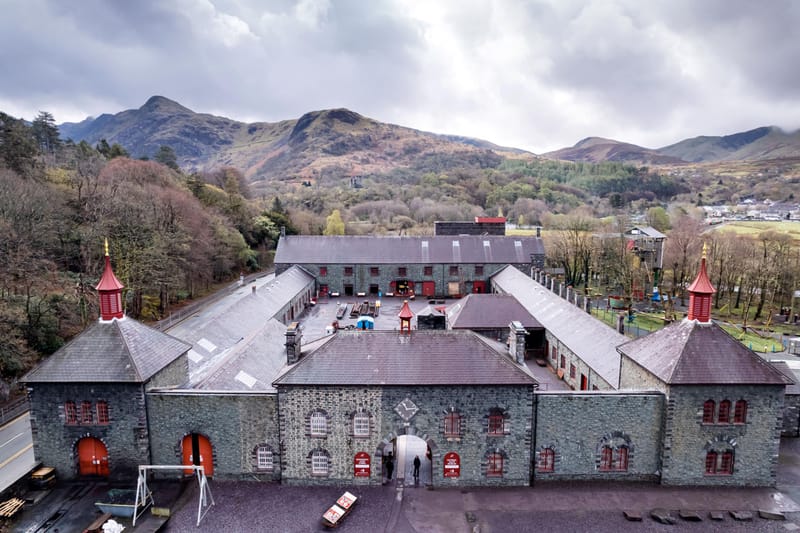Slate Quarry Workshops / National Slate Museum

Slate Quarry Workshops / National Slate Museum
What is it?
Home to the National Slate Museum, the building was constructed in the 1860s as the workshops of the thriving Dinorwig slate quarry. Today, it is Grade I listed and one of Britain’s best-preserved industrial buildings of the Victorian age

What’s there?
The old sheds, workshops, and forges have been preserved and are accessible for the public to view. The museum also has exhibitions, demonstrations, and an education and crafts room. There is a gift shop, café, and play area onsite too.
Facts -
▪ The quarry closed in 1969 and the Museum originally opened to the public in 1972. Many of the sites former quarrymen and engineers were employed to present their craft, while equipment was collected from other Welsh quarries. In later years the quarry's incline was restore to its former glory, and the Museum re-opened in 1999 with new unique features and facilities.
▪ A giant waterwheel powered all the machinery in the workshops via a rotating shaft connected to belts – machinery such as drills and lathes. The waterwheel can still be seen turning today and is the largest working one on mainland Britain.
▪ Slate has been quarried in Wales for over 1,800 years.
▪ Welsh slate is considered to be the best in the world: it is easy to split yet very strong. This makes it ideal for roofs. It was with the dawn of the Industrial Revolution in the late 18th century that the slate industry took off with Welsh slate being exported worldwide.
In Culture

The slate history of North Wales has left a profound mark not only on the landscape but it its culture. North Wales artist JB Evans produced a series of works dedicated to the history of the North Wales Slate community.
